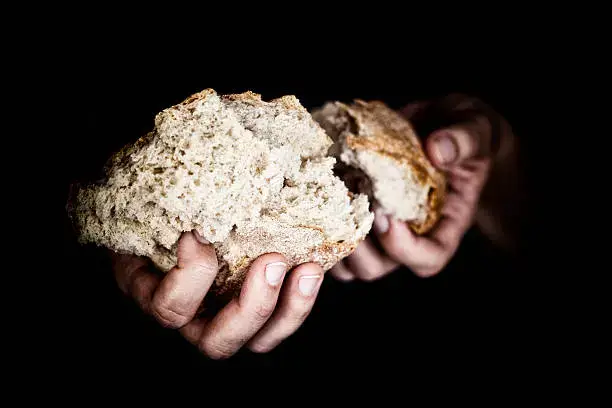By current church growth measures, Jesus was a failure.
He had attracted a crowd of over 3,000. But with one message about the cross, His audience shrank to twelve.
The disciples watched Jesus feed the multitudes and saw Him walk on water. Needless to say, they must have felt pretty good about choosing to follow Jesus.
As the follower counts were climbing and the future looking bright, Jesus preached the most unpopular sermon (John 6:53-68). It was almost like He gathered all the followers just so He could tell them to go away! You could see the disciples’ faces, speechless, as line after line of unapologetic truth fell on their ears.
Jesus preached about eating His flesh and drinking His blood, without which you will not have eternal life (John 6:53-68). In other words, Jesus was painting the true picture of following Him – submission and devotion despite persecution, even to the extent of execution. Why did Jesus have to preach that sermon? He could have continued feeding them, healing them and enthralling them with His miracles. But He didn’t.
Jesus was not interested in a following. He wanted disciples, those who would stay in spite of hard teaching. And so He had to fan away the spectators till true disciples remained.
Matthew 3:12 (KJV) 12 Whose fan is in his hand, and he will thoroughly purge his floor, and gather his wheat into the garner; but he will burn up the chaff with unquenchable fire.
How to Make Bread
To make bread, it all begins with the grain. Good grain makes good bread. And bread feeds the hungry.
To get good grain, you must first separate out the unusable parts of the harvest like the stalk and chaff.
In Jesus’ era, you gathered sheaves. Sheaves were taken to what is called a threshing floor. It took time and effort to turn an ingathering into a useable harvest.
- On the threshing floor an ox walked on the sheaves breaking the grain from the stalk. The broken stalks were swept aside.
- What survived the breaking process was tossed up while a large hand-fan stirred the air. The fan blew the “fluff” away. What the fan did not blow away fell to the threshing-floor. Most of what laid now on the threshing-floor was grain – not fodder or fluff (Matt 3:11-12).
- The rest, which was only a minute part of the original ingathering – was shaken through a sieve to filter away the tiny particles of chaff. Only what remained was available to plant for future harvest, or to be put to use at the dinner table.
Breaking, shaking, and sifting divided the useable from the gathered. Jesus eliminated the stalks and chaff from the wheat.
Every apostolic church must have a winnowing process if it is going to become bread to feed this world. Until new converts go through the threshing-floor you never know what you really have.
How Does This Happen in Our Churches Today?
As Pastor and leaders, ask yourselves if you can identify those who are disciples in your congregation. And if you can, how did you do it? What were some things that identified them as disciples?
At Tabernacle of Joy, we identified a simple 4 stage discipleship process. Every believer grows through the Learn, Discover, Serve and Impact Stages in their walk with God. Like how a healthy baby grows into an adult, our babes in Christ should grow into mature saints. With the proper nutrients, diet, education and life skills, children grow up to be contributing adults in society. That is what we want for our spiritual babies too. But in order for that to happen, we must provide a structure and process to nurture and train them.
Like separating the chaff from the grain, having a discipleship track is a winnowing process. It will identify good grain that is fit for the Master’s use.
Find out more about developing a discipleship track for your own local church or join us for a Webinar of the same!




.jpg)

Finis Ellis
Pastor Tim, Very Good Article! As you’ve heard me say… No Threshing floor, No Church!